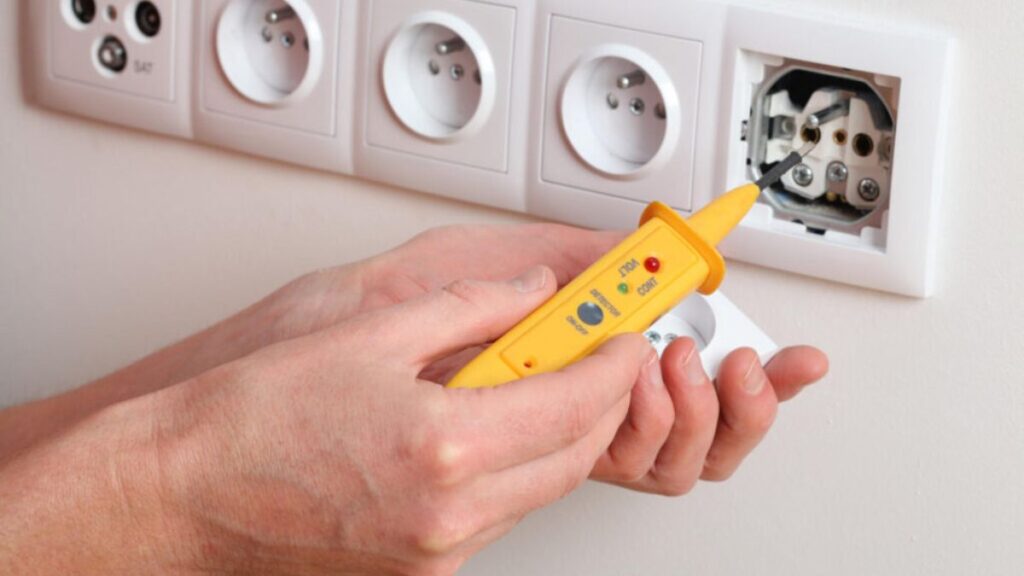Electricity powers almost everything in our daily lives-lights, appliances, computers, and even smart home systems. Yet many homeowners rarely think about their electrical system until something goes wrong.
Just like other parts of your home, your electrical system can wear out or become outdated. Ignoring signs of trouble could lead to bigger problems, including fire hazards, power outages, or costly repairs.
In this article, we’ll explore the top signs that it might be time for an electrical system overhaul. If you notice any of these signs, it’s best to take action before small issues become major risks.
Flickering or Dimming Lights
One of the most common signs of electrical trouble is flickering or dimming lights. If your lights flicker when you turn on a major appliance-like the vacuum or microwave-it could be a sign your electrical system is struggling to keep up.
This often happens when circuits are overloaded or connections are loose. While a single flicker might not mean much, repeated or widespread flickering deserves a closer look from a licensed electrician. It could mean your wiring is old, outdated, or unsafe.
Frequent Circuit Breaker Trips
Circuit breakers are designed to protect your home by stopping the flow of electricity when a problem is detected. If your breaker trips once in a while, that’s normal. But if it’s happening often-especially when you’re using the same appliances or plugging into certain outlets-it may be time to upgrade your electrical system.
Repeated tripping could be a sign your circuits are overloaded. Older homes were not built to handle the number of devices and appliances we use today. An updated electrical system can ensure safe and steady power for modern living.
Outdated Electrical Panel
Your electrical panel is the control center of your home’s electrical system. If it’s more than 25 years old, it may not be able to handle the electricity demands of today’s households.
Signs that your panel may be outdated include:
- uses fuses instead of breakers
- buzzing or crackling sounds
- rust or burn marks
- feels warm to the touch
An older panel might not meet current safety codes, which is why a home electrical system upgrade is often recommended during remodeling or when adding new appliances.
Limited or Overused Outlets
Are you using power strips in every room? Are some outlets warm or discolored? These could be signs that your electrical system is overworked.
Older homes often don’t have enough outlets for today’s needs, which leads to unsafe reliance on extension cords and multi-plug adapters. Too many devices plugged into one outlet can create overheating and fire risks. If you constantly run out of plugs, it might be time to consider new wiring or an updated electrical layout.
Burning Smell or Sparks
If you smell something burning and can’t find the source, check your outlets and panel box immediately. A burning smell could mean wires are overheating or melting-this is a serious warning sign.
Similarly, if you see sparks when plugging in an appliance, don’t ignore it. These problems are dangerous and should be checked by a professional as soon as possible. They often indicate faulty wiring or loose connections that need urgent repair or replacement.
Frequent Power Surges
Power surges can damage your electronics, appliances, and even your wiring. While they’re sometimes caused by lightning or external factors, frequent surges could mean your home’s wiring or panel can’t handle the load.
If your TV, computer, or lights suddenly flicker off and back on again, or if your surge protectors are constantly triggered, it’s time to have your system inspected. An electrician may recommend grounding, rewiring, or a complete system upgrade to protect your home and devices.
Buzzing or Vibrating Outlets and Switches
Outlets and switches should work quietly and feel stable. If you hear buzzing sounds or feel vibration when you touch them, there could be a serious issue behind the wall.
Buzzing can indicate a loose wire, faulty switch, or overloaded circuit. Vibration could mean your electrical box is loose. Both are symptoms of unsafe electrical flow that may require immediate repairs or an overhaul of part of your system.
Outlets That Don’t Work
Sometimes an outlet stops working for a harmless reason, like a tripped breaker. But if you have several outlets that no longer work-or outlets that work only sometimes-it could be a sign of wiring trouble.
Worn-out or damaged wires can prevent electricity from reaching the outlet, and in some cases, the wire damage can create sparks behind your walls. Replacing old or faulty wiring is not just about convenience-it’s about safety.
Old Wiring Types
Homes built before the 1960s may still use knob-and-tube wiring or aluminum wiring. While these systems were standard in their time, they are now considered outdated and potentially dangerous.
Aluminum wires, for example, can corrode over time and create fire hazards. Knob-and-tube wiring lacks a ground wire and can’t support today’s power needs. If your home still uses either type, a licensed electrician will likely recommend a full replacement.
You’re Renovating or Expanding Your Home
If you’re planning a renovation, building an addition, or adding new appliances like a hot tub or electric car charger, your current system may not be able to handle the extra load.
During any home improvement project, it’s smart to include a home electrical system upgrade in the plan. This ensures your new space is powered safely and efficiently without overloading your old circuits.
Your Home is Over 30 Years Old
Even if everything seems to be working fine, age alone is a good reason to have your electrical system evaluated. Materials break down, insulation wears off, and safety codes evolve. A home built more than three decades ago likely has a system designed for a different era of power use.
An inspection can reveal hidden risks and help you stay ahead of potential problems. In many cases, upgrading your system can also increase your home’s value and make it more attractive to future buyers.
Shock or Tingles from Appliances
You should never feel a shock or tingle when touching appliances, light switches, or outlets. If you do, it’s a sign that electricity is escaping from its proper path-usually due to a grounding problem or faulty wiring.
This is not just unpleasant-it’s dangerous. Electric shock can cause injury or death, especially if the grounding issue worsens. If you feel anything unusual when using your devices, stop using them and call an electrician right away.
High Electricity Bills Without Explanation
Have your electric bills gone up even though your habits haven’t changed? An outdated or faulty electrical system might be to blame.
Older wiring, poor connections, and overloaded circuits can lead to inefficiency and wasted energy. A system upgrade can not only improve safety, but also boost energy efficiency-saving you money in the long run.
You’re Relying on Two-Prong Outlets
If most of your outlets are two-pronged instead of three-pronged, your system is behind the times. Two-prong outlets don’t provide grounding, which is important for safety, especially with modern electronics.
Grounding helps protect people and devices from electric shock. Switching to three-prong outlets usually requires an electrician to inspect and possibly rewire the circuit. It’s a common part of updating older homes.
Insurance and Code Compliance Issues
Many insurance companies now require homes to meet modern electrical standards. If your home fails inspection or doesn’t comply with local codes, you may face higher premiums or lose coverage altogether.
Likewise, when selling your home, outdated electrical systems can cause problems during the inspection. Making sure your home is up to code with the latest safety features is a smart investment that can avoid costly issues later.
You Want Smart Home Features
Smart thermostats, security systems, smart lighting, and home automation all require reliable and modern wiring. If your current system is outdated, you may experience glitches, failures, or performance issues with your smart home tech.
Upgrading your electrical system will ensure that your new devices operate smoothly, securely, and with the power they need. It also opens the door for more energy-efficient living and modern convenience.
What an Electrical System Overhaul Involves
An electrical system overhaul may include:
- Replacing the main service panel
- Upgrading wiring throughout the home
- Adding new grounded outlets and GFCIs
- Installing surge protection
- Improving grounding and bonding systems
- Expanding capacity for future needs
The project may sound big, but it pays off in peace of mind, better performance, and safety. A licensed electrician can help assess what parts of your system need repair, replacement, or expansion.
Don’t Wait Until It’s Too Late
Your electrical system is one of the most important parts of your home, but it’s also one of the most overlooked. Many electrical problems start small-like a flicker or buzz-but can turn into major hazards if ignored.
If you’ve noticed any of the signs we covered, now is the time to act. An expert inspection and, if needed, an electrical system overhaul can make your home safer, more efficient, and ready for the future.
Did you enjoy this article? Check out the other great articles on the website!







